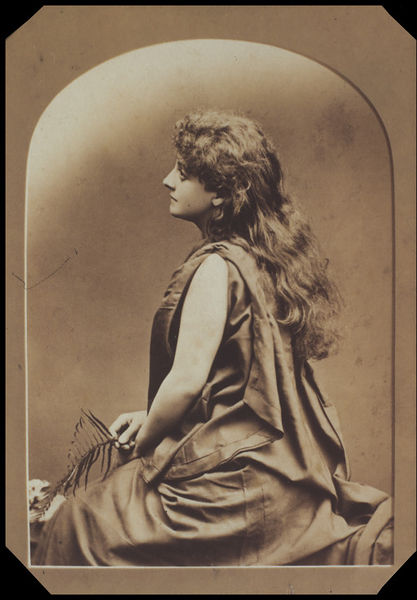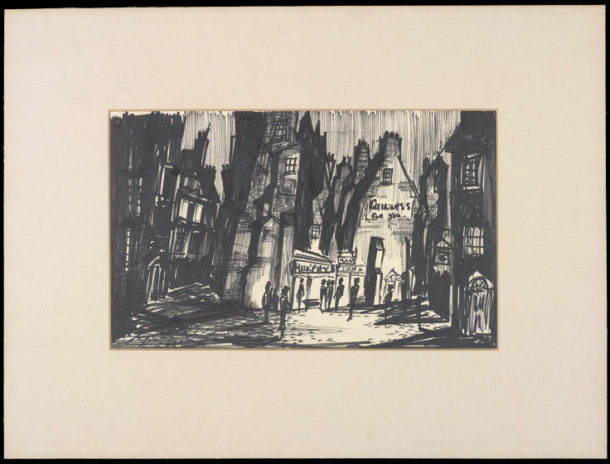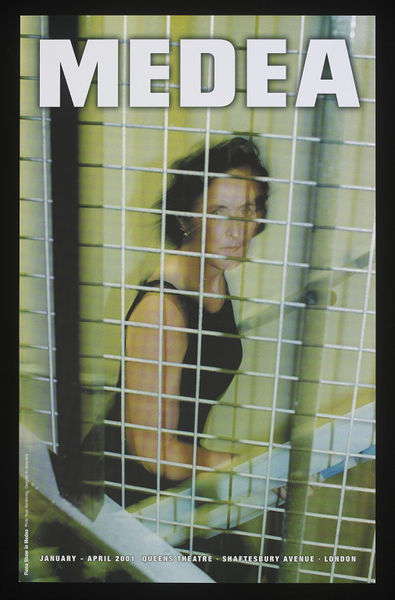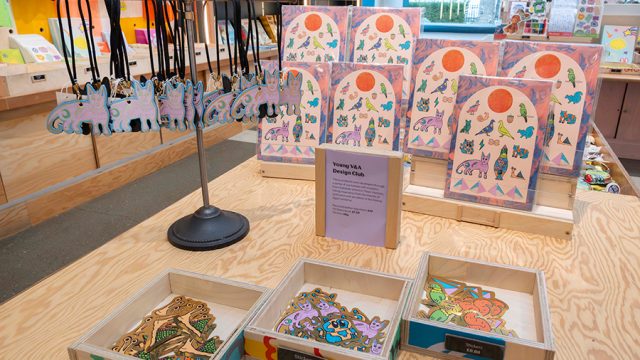Assistant Curator, Harriet Reed, explores the history of Irish theatre and shares a few of the highlights from the V&A Theatre and Performance Collections.
‘It is Ireland’s sacred duty to send over, every few years, a playwright to save the English theatre from inarticulate dumbness.’
Kenneth Tynan, 1956
Following on from a recent conference ‘London and the Irish Stage’ at Trinity College Dublin, and to celebrate the Dublin Theatre Festival (28 September – 15 October 2017), I’ve selected 5 highlights from our collection of Irish Theatre in the V&A collection:
Token for Smock Alley Theatre in Dublin, 18th century
Smock Alley Theatre was opened in 1662 as the second purpose-built theatre in Ireland. It was the first theatre to stage plays by Oliver Goldsmith, George Farquhar and Richard Brinsley Sheridan, not to mention launching the careers of famous 18th century actors such as Peg Woffington and Charles Macklin.
Theatre tokens were used to gain regular entry to performances. This token was used by the Countess of Branden (1708-1789), whose name is inscribed on the obverse. We can tentatively date the token between the years 1758-1789, as she was gifted this title following the death of her second husband but it expired on her death. Interestingly, you can see distinctive marks where someone has scratched out the word ‘Countess’.

Photographs of actress Eveleen Rayne as Moya in The Shaughraun, 1890s


17th century plays often featured a stereotypical ‘stage Irishman’ character, usually portrayed mockingly with an indistinguishable accent. Irish playwrights began to subvert this stereotype in the late 18th century.
In the 19th century, playwright Dion Boucicoult wrote The Shaughraun (first performed in 1874), breaking new ground by exploring Irish identity and portraying lower-class Irishmen. The title translates from the Irish as ‘errant’ or ‘wanderer’. The character Conn – the ‘Shaughraun’ of the title – is described as ‘the Soul of every Fair, the Life of every Funeral, the First Fiddle at all weddings and patterns’.
Royalty notes for the production of Arms and the Man at Abbey Theatre Dublin, 1916

George Bernard Shaw was an Irish playwright who had an incalculable influence on British theatre. His most famous plays include Mrs Warren’s Profession and Pygmalion. He joins the pantheon of great 20th century Irish playwrights along with Oscar Wilde, Samuel Beckett, J. M. Synge, Sean O’Casey and William Butler Yeats.
These receipts record the October 1916 production of Arms and the Man at the Abbey Theatre, Ireland’s national theatre in Dublin. It followed a revival of Shaw’s John Bull’s Other Island in September.
This season drew significant praise and attention following the Easter Rising in April 1916. Shaw had publicly criticised the British government’s execution of the Easter revolutionaries and referred to it as ‘terrorism’. His plays were re-appraised as nationalist by Dublin audiences.
Set design by Sean Kenny for The Hostage at Theatre Royal Stratford East ,1958

The Hostage is a play written by Brendan Behan, loosely translated from his one-act Gaelic play titled An Giall (first performed in Dublin). This was its London premiere at the Theatre Royal Stratford East. It follows the story of Leslie Williams, a British soldier captured in Northern Island and held ‘hostage’ in a brothel in Dublin, while news reaches the various inhabitants of the house that an 18-year-old IRA member in Belfast has been executed.
This set design is part of the Sean Kenny Archive, which covers Kenny’s career in the 1960s and 1970s. A prolific artist, the County-Tipperary-born designer came to London in 1957 to begin his stage design career, winning a Tony Award for his designs for Oliver! In 1960.
Poster for Medea, 2000

The founding of the Abbey Theatre in 1904 by Lady Augusta Gregory and William Butler Yeats was a ground-breaking attempt to take control of the Irish stage image. Over the last hundred or so years, the Abbey has developed an international touring programme and global repertoire of plays.
This production of Medea, directed by Deborah Warner and starring Fiona Shaw, was first performed at the Abbey in 2000. Its critically acclaimed reception saw it transferred to London’s West End and then on to Broadway where Shaw received a Tony award nomination for Best Actress.
These highlights are only a snapshot of the material we hold. To find out more about the Theatre and Performance Collections visit Search the Collections and Search the Archives.


